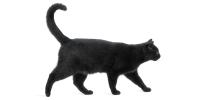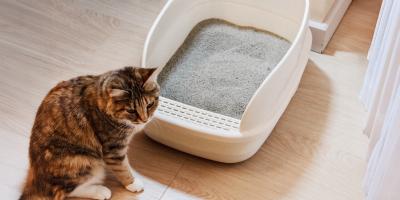Cat Anatomy & Physiology 101


Cat anatomy is a topic you may spend more time considering than you think.
If you’ve ever admired your feline’s climbing skill, proficiency getting cat food from a puzzle feeder, or ability to seemingly always land on their feet, you’ve noticed some of the impressive ways their bodies can perform.
It’s easy to forget that in addition to being our entertaining and loving pets, our cats are also incredible athletes with fascinating anatomies.
By taking a closer look at our cats’ bodies, we can appreciate their extraordinary nature even more.
Here’s an overview of some of their unique and important anatomical features and functions.
Cat Skeleton Anatomy
An important reason for cats’ physical dexterity is their flexibility.
In addition to having a small or nonexistent collarbone (depending on breed), their backbone has 30 vertebrae (although some breeds may have fewer vertebrae).
This allows them to make quick, nimble movements at a moment’s notice.
On average, cats have around 250 bones in total (many more than humans), but the number may vary depending on the length of their tail.
Cats’ bones are less tightly connected than those of most other animals, and the discs between each vertebrae are thick and spongy. This accounts for their excellent flexibility. They can bend and twist their front and back body parts independently, as well as compress and stretch out their spines.
Their bones can be divided into two primary subunits: appendicular (limb bones) and axial skeleton (skull, spine, ribs and sternum).
A Cat’s Tail
Around 19-28 of cats’ vertebrae are contained in their tails, which play an important role in balance.
Considering how often many cats climb, run and jump, keeping balance is crucial. A cat’s tail is also vital for communication; cats often express important information and feelings through the positions and movement of their tails.
Cat Paw Anatomy
Cats’ paws contain sensitive nerve receptors. This lets them feel vibrations as well as assist with balance. On the other hand, nerves make paws especially sensitive to touch, so you may want to mind them when playing with your cat.
Ever wondered how your pet can leap around without injuring themselves? Cats’ paws act as shock absorbers, minimizing discomfort from impact.
Additionally, if you’ve ever seen damp pawprints, it’s likely because cats sweat from their paws.
Cat Claws
When it comes to cat anatomy and physiology, it’s important to acknowledge the role of claws.
Cats have 10 front claws and eight back claws (which matches their number of toes). Because they curl, claws can catch and hold objects, as well as help your pet climb – but only up. The curling angle means they have to climb backwards when they want to go down.
Cat Digestive System & Other Internal Systems
A cat digestive system is comprised of their mouth and teeth, salivary glands, esophagus, stomach, intestines, liver, pancreas, rectum and anus.
The digestive system provides nutrients to your cat’s body while eliminating what they don’t need in the form of waste.
Internal systems also include cardiovascular, lymphatic, respiratory and others.
Cat Eye Anatomy
Cat eye anatomy resembles that of humans as they have a cornea, lens and retina. Also, cats have unusually large eye sockets that house a powerful set of eyes.
Your cat’s eyes include a thin layer of cells in the retinas that reflect light back into the eye. This, along with the ability to dilate pupils extremely widely, makes your cat incredibly well-equipped for staying active in low-light situations, such as hunting or playing around the home.
Cat Skin
The top layer of cat skin is called the epidermis and performs several important functions. Skin protects the body against dryness and pathogens and regulates body temperature, among other things.
Additionally, have you ever noticed how loose your cat’s skin is? This is actually an advantage to cats in the wild; loose skin means that cats are flexible to move around quickly during confrontations.
Cat Ear Anatomy
The triangle shape of your cat’s ears is known as the pinna. This unique shape helps improve your pet’s hearing by funneling sound waves into the ear canal and middle ear.
Inside the middle ear, two small bones (the eardrum and ossicles) vibrate with sound waves, which are then sent to the inner ear. The vestibular system is located in this area and helps control your cat’s balance.
This is just a primer for understanding the basics of your cat’s body. For more details about what makes your cat unique, talk with your veterinarian. You can also find out what our experts have to say on our Pet Expertise page.

Earn myPurina Rewards with Every Purchase
Use your points for treats, toys, and gift cards with myPurina app.






